
Vietnam Coracle
First published September 2023 | Words and photos by Luke Digweed | 8 comments
“Coffee….with salt?” Mum winced. Most people do. But, after this first encounter, she returned every morning until we left Huế. Coffee and salt (cà phê and muối) are both strong flavours but they lead the mind in opposing directions: surely they couldn’t go together. But, as is so often the case in Vietnam when it comes to flavours, salt coffee just works. Salt Coffee has captivated the population of Huế city for over a decade, but this unusual concoction has only recently spread to cafe menus across the country. Once a family secret, salt coffee is now a well-loved drink nationwide. What makes salt coffee’s success even more surprising is that some drinkers enjoy it despite not liking coffee!
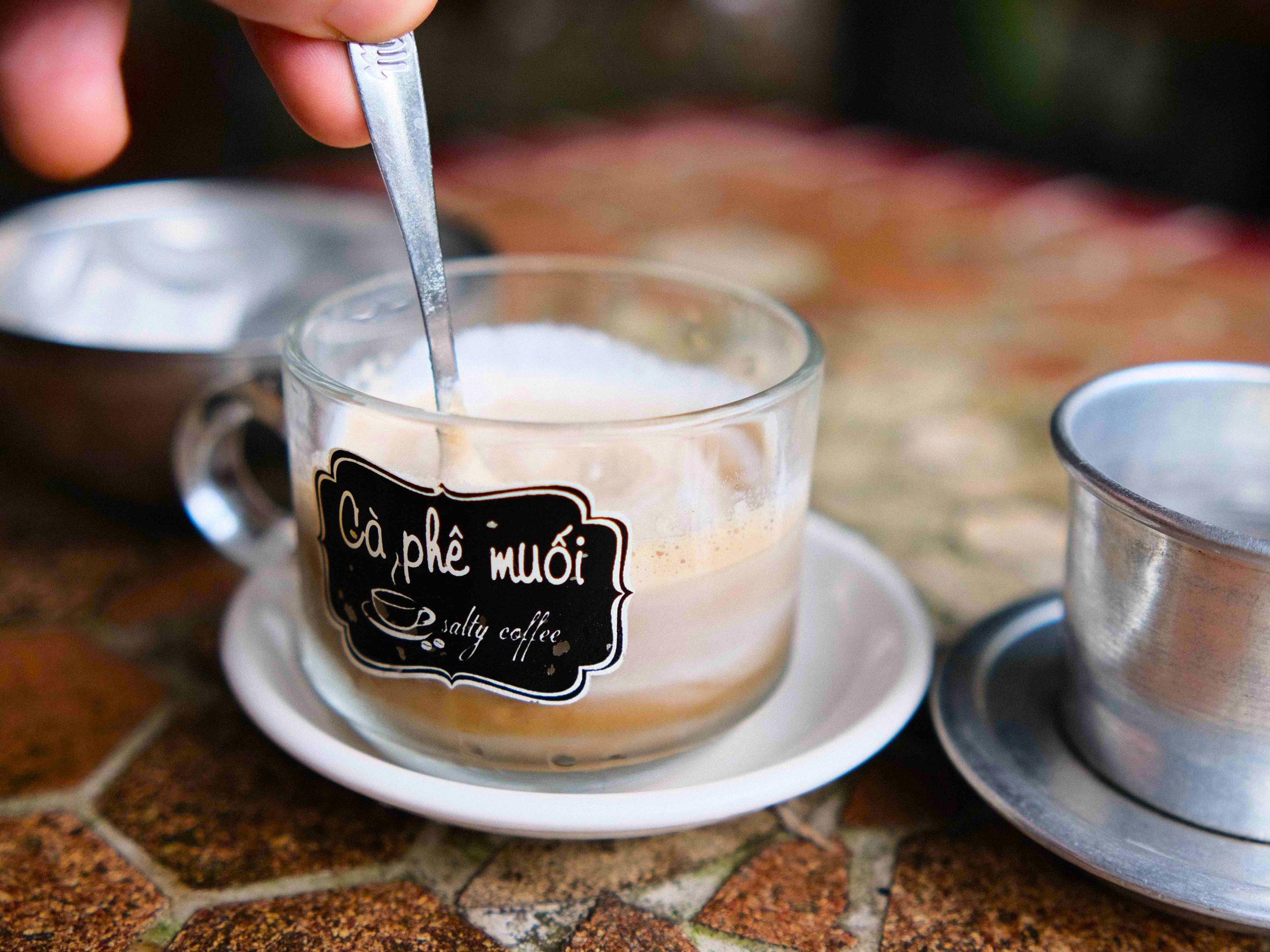
[Back Top]
The Origins & Success of Cà Phê Muối - Salt Coffee
Salt coffee marries rich robusta coffee beans with a touch of salt, creating a fine balance of bitter and sweet, reminiscent of salted caramel. This delightful fusion embodies the spirit of Vietnam’s contemporary culinary scene, combining the traditional coffee experience with a dash of 21st century creativity. This is also reflected in the décor and atmosphere of the coffee shop where salt coffee was born: at Cà Phê Muối in the former imperial city of Huế.
CONTENTS:
Map
The Story of Salt Coffee
Locations for Salt Coffee
Related Posts
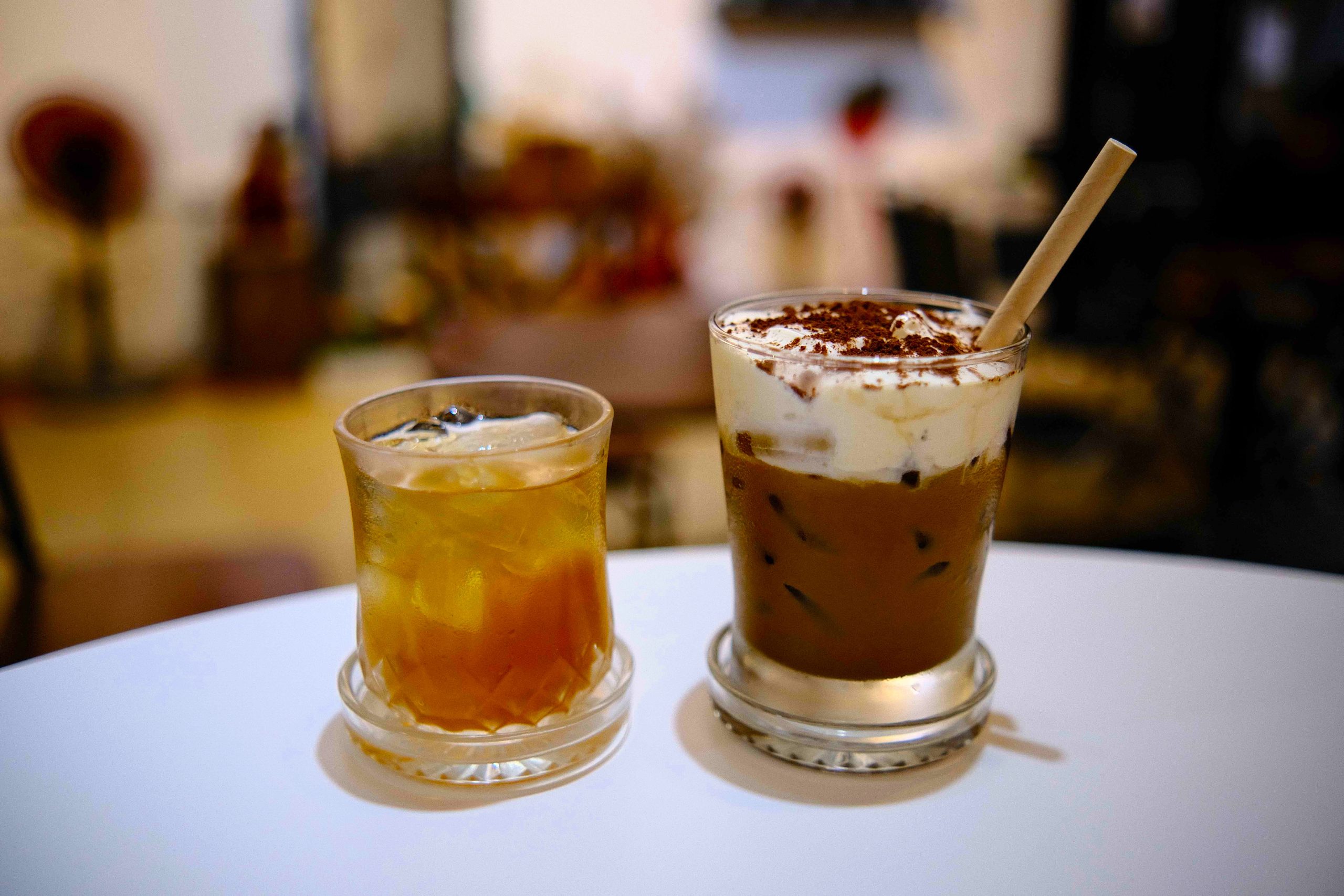
The Two Original Cà Phê Muối (Salt Coffee) Locations in Huế
[Back to Contents]
The Story of Salt Coffee:
When I ran Huế Grit, Cà Phê Muối was the meeting point for my Huế food tour. Back then, salt coffee was a well-kept secret within the business. Husband-and-wife founders, Mr Phong and Mrs Hương, were tight-lipped about the formula they used to create their unique drink. Sales of salt coffee thrived, but its recipe remained a secret. Towards the end of the 2010s, salt coffee started to appear on menus in neighbouring cafes and, eventually, throughout the cities of Central Vietnam. Did somebody figure out the secret ingredients? Or did a disgruntled employee take revenge?


Nowadays, instructions for making salt coffee are just a few clicks away on the internet for anyone who wants to make or sell it. Since the publication of my Huế Food Guide on Vietnam Coracle in 2022, coffee shops nationwide have added salt coffee to their menu. Coffee chains promote their version of the drink on advertising boards throughout the country; roadside vendors use the drink’s name to grab the attention of passersby; salt coffee can even be found abroad, as far away as Europe and the UK. At the time of writing, Vietnam-based East West Brewing Co. have a limited edition salt coffee craft beer!

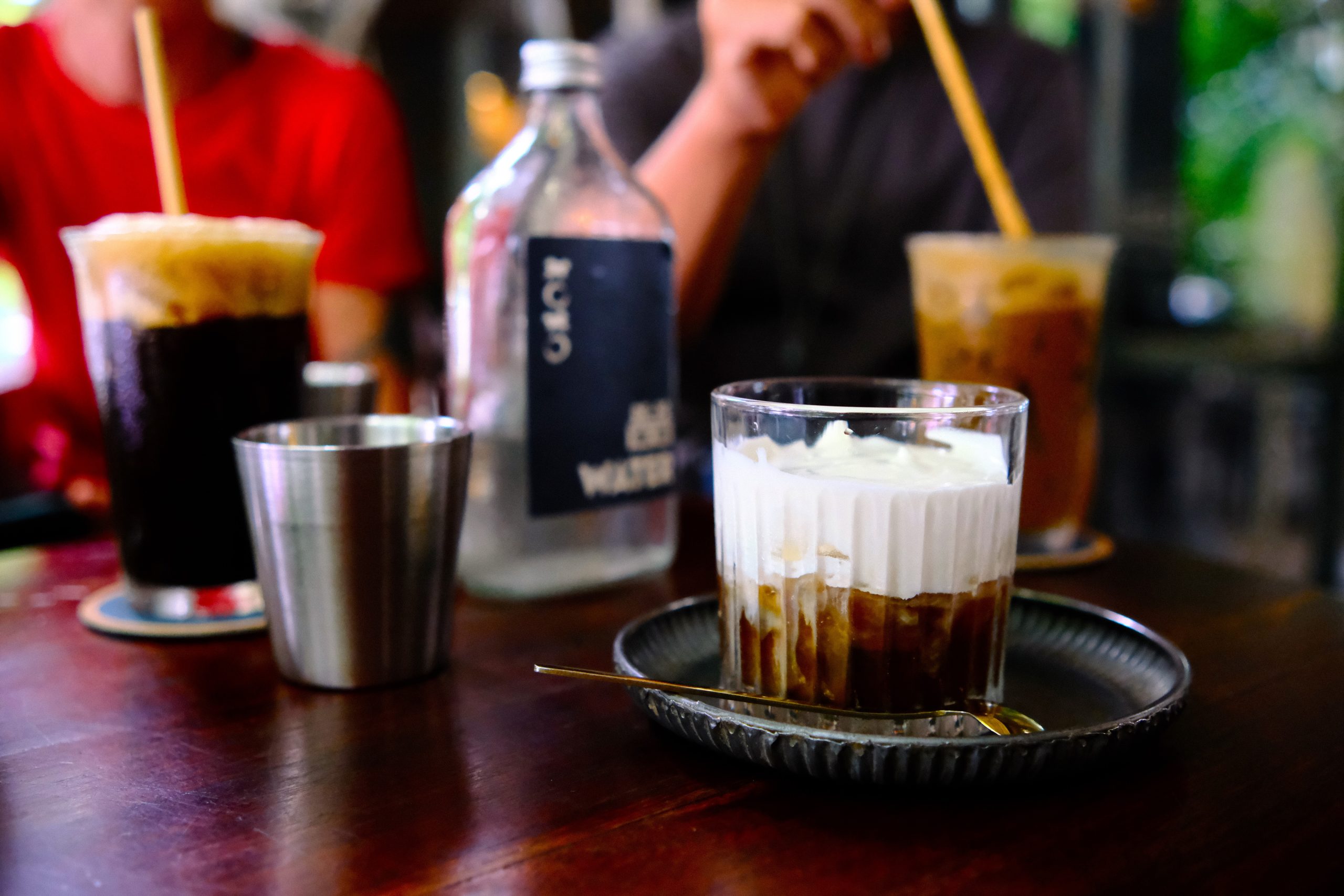
So how do the owners of the original salt coffee feel about their creation’s universal popularity? “At first, we felt joy and pride because we created a drink that is loved by many people and it is a Huế specialty,” say Mr Phong and Mrs Hương. “But, the next feeling was more complicated, because we began to realise the difficulties and challenges that our salt coffee business will face now that there is so much competition.”
In a country with little protection for intellectual property, Mr Phong and Mrs Hương - the original owners of Cà Phê Muối where salt coffee was born - have received no direct financial benefit from its nationwide boom in popularity. Fortunately, their own business in Huế continues to thrive, attracting a steady flow of customers from early morning until late night.


“The fact that other people now trade in salt coffee has had both positive and negative effects on our shop. The negative is that it takes customers to other locations rather than ours, but the positive is that it brings the drink to the attention of new customers, many of whom might want to find and drink salt coffee at its original location. Furthermore, we have old customers who enjoy our original salt coffee flavour more than any other: some have been loyal to our shop since the day we first opened.”
While the idea of major coffee chains profiteering from the popularity of the original salt coffee is polarising, the spread of the recipe has also benefited smaller, independent businesses. National newspaper VNExpress shared the story of 57-year-old Dương Thành Long, who found himself in debt when the pandemic forced him to close his first coffee shop. On his second attempt, he discovered salt coffee’s growing trend and decided to sell it from a mobile stall in Ho Chi Minh City. Within a few days, Mr Long’s sales grew dramatically, reaching almost 2,000 cups. In a short space of time, Mr Long’s worries about his financial security were superceded by how to deal with 22 city-wide locations operating under his brand name, Cà Phê Muối Chú Long(Uncle Long’s Salt Coffee).

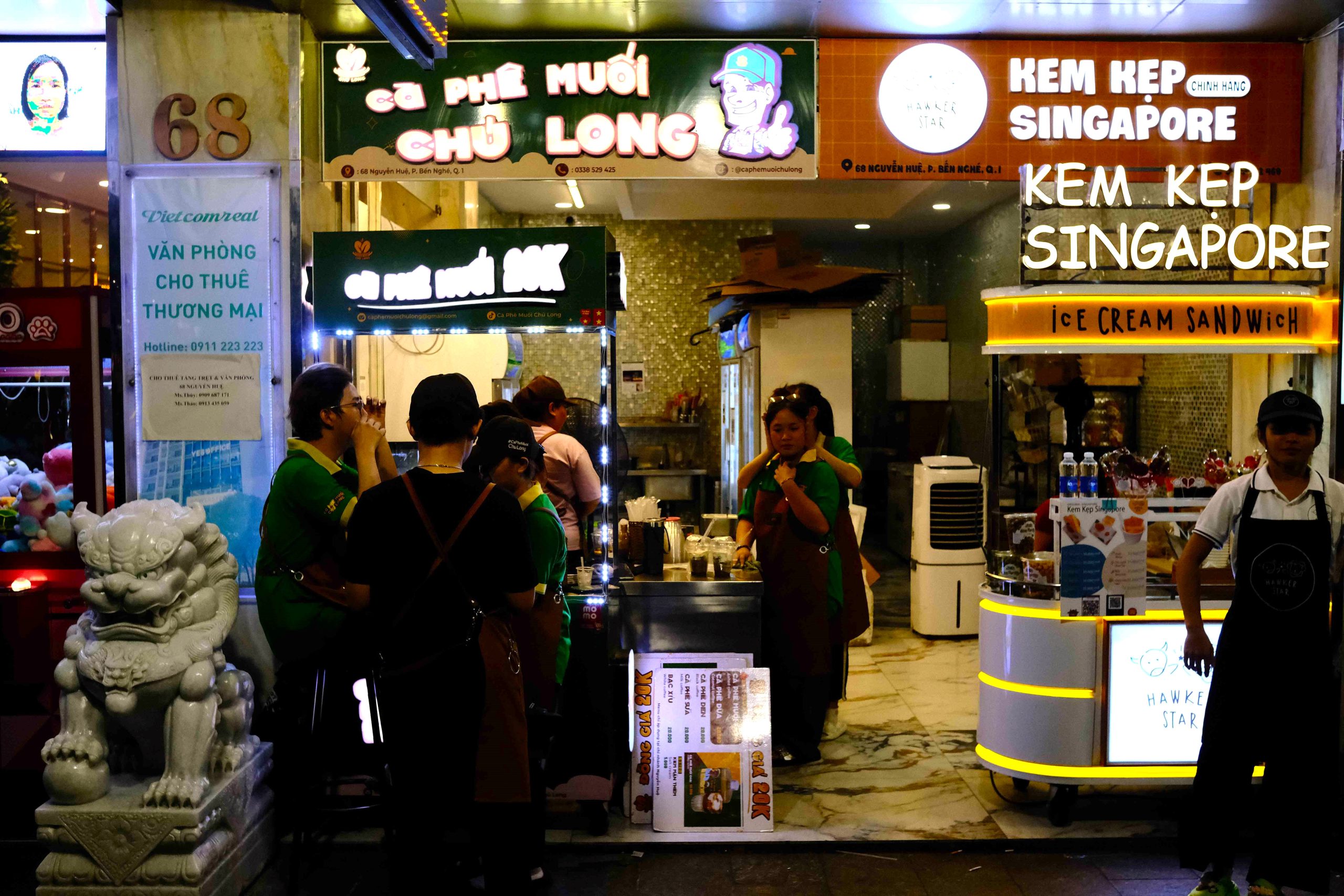
The salt coffee trend shares similarities with the egg coffee craze that swept the nation a few years earlier. Egg coffee (cà phê trứng) was created during the hardships of 1940s Hanoi, and can now be found in coffee shops across the country. If salt coffee follows a similar trajectory, then its creators - Mr Phong and Mrs Hương - have little to worry about, as foodies, food journalists, and food-culture purists all continue to make pilgrimages to egg coffee’s original location in the capital, out of respect for the drink’s origins.
As I taste-test my way through various salt coffee shops in and around Ho Chi Minh City, I am left feeling dissatisfied by these imitations of the original drink at its original location. Instead of serving the coffee in a filter and letting it drip onto the salty mixture, most vendors serve their salt coffee ready-made. At the many branches of Cà Phê Muối Chú Long, the salt coffee is packaged and bagged even before anyone has ordered it. At the original Cà Phê Muối shop in Huế, customers can add their own ice (if, indeed, they want any ice at all), but in Ho Chi Minh City you are seldom given the choice. Another location salts the rim of the glass, like a margarita, and serves the coffee at a price more than double the original.
In Vietnam, replicating other businesses’ products rarely concerns business owners if it meets local demand and increases profit. However, while a product may be identical in name and concept, very rarely does it compete with the qualities of the original on which it is based. This ‘copycat culture’ can be seen in many industries across the country, including clothing and electrical appliances. Although the recipe for salt coffee is no longer a secret and the taste has been replicated to varying degrees of success, the original salt coffee in Huế remains untoppled. At Cà Phê Muối, Mr Phong and Mrs Hương continue to serve an excellent cup at a competitively low price, as well as providing a great rendezvous point with its garden and conservatory in the centre of Huế. As consumers, we are reminded that rarely do imitations compete with the original.
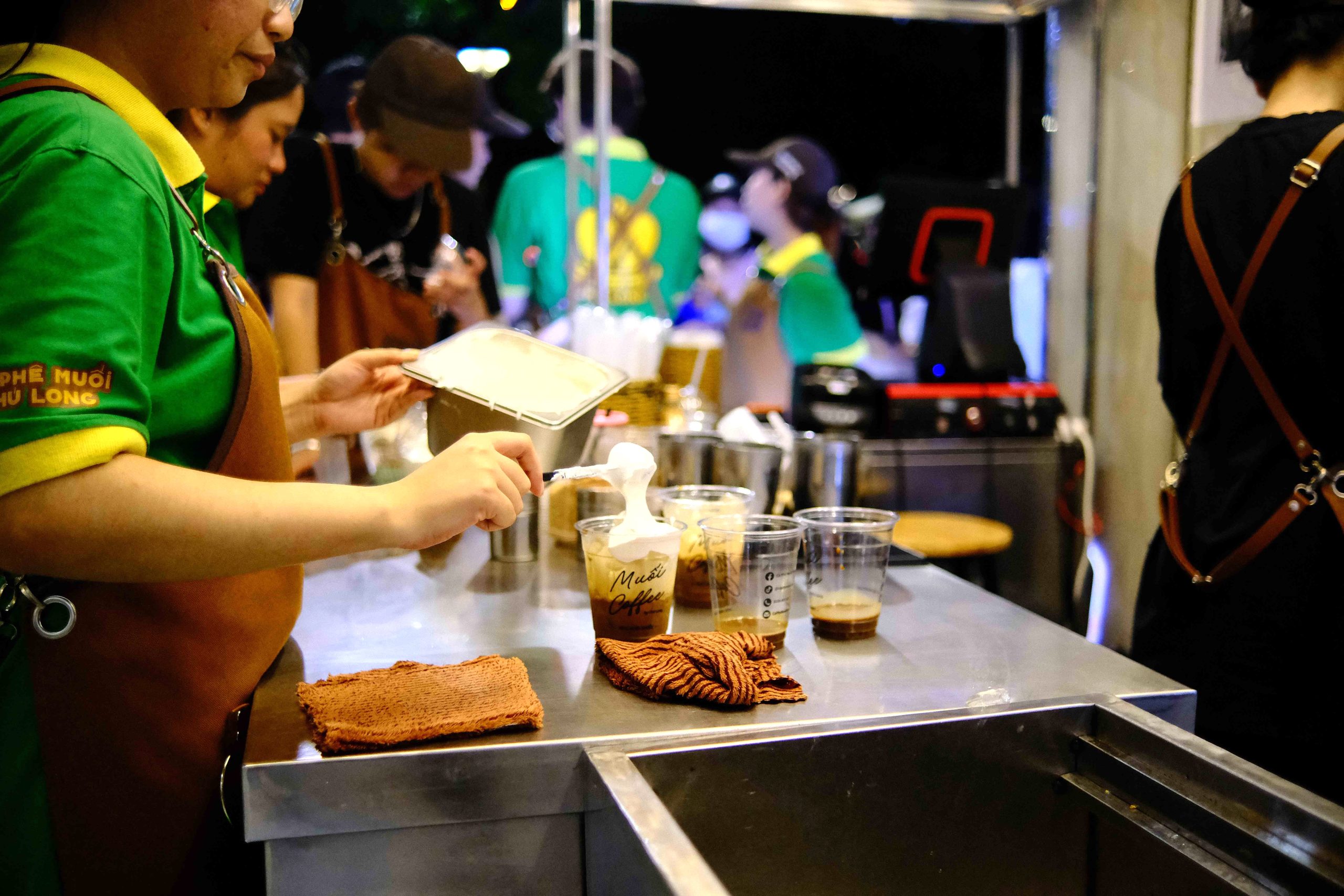
[Back to Contents]
Locations for Salt Coffee:
You’re never far from a salt coffee shop in most urban areas of Vietnam. Given the choice, I wouldn’t go anywhere else for a cup of cà phê muối than the two original locations in Huế. However, I’ve listed a couple of others below and, if you’re having trouble finding one, a simple search on Google Maps for ‘salt coffee’ or ‘cà phê muối’ should produce many results:
Cà Phê Muối in Huế (the original locations):
- 10 Nguyễn Lương Bằng (original location) [MAP]
- 142 Đặng Thái Thân (Citadel location) [MAP]
Salt Coffee in Ho Chi Minh City (Saigon)
- Cà Phê Muối Chú Long - 68 Nguyễn Huệ
Salt Coffee Craft Beer (limited edition)
- East West Brewing Co - 181 Lý Tự Trọng
Egg Coffee in Hanoi (the original location):
- Giảng Cà Phê - 39 Nguyễn Hữu Huân

*Disclosure: Vietnam Coracle content is always free and independent. Luke has written this guide because he wants to: he likes salt coffee and he wants readers to know about it. For more details, see the Disclosure & Disclaimer statements and my About Page
[Back to Contents]
Link nội dung: http://thoitiet247.edu.vn/caphe-muoi-a52581.html